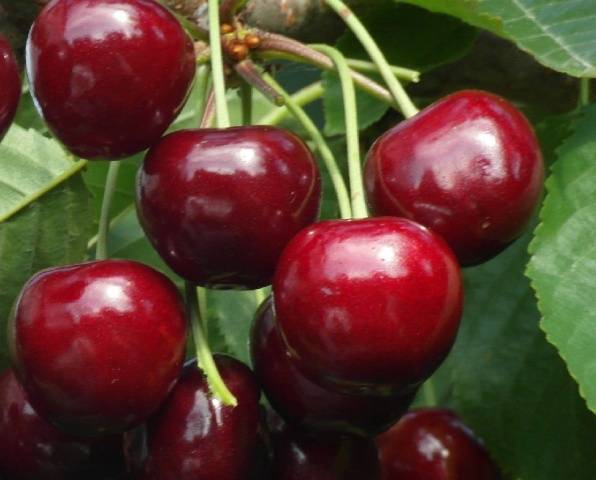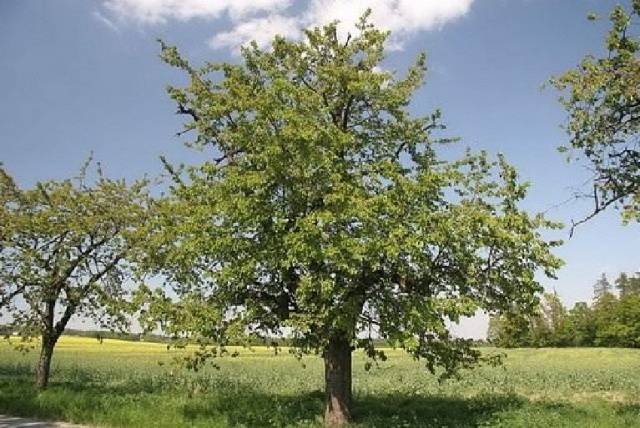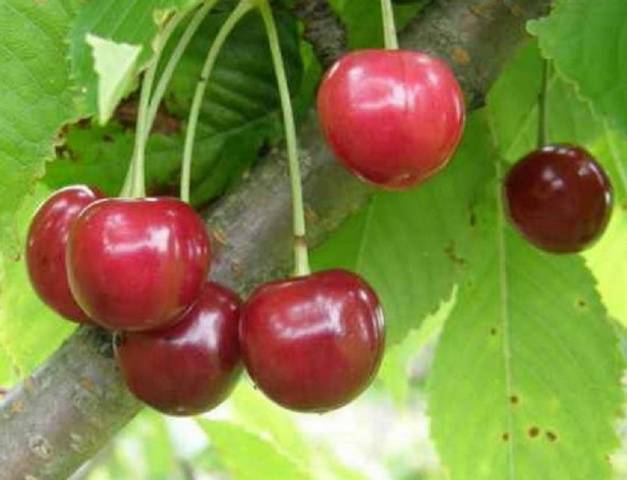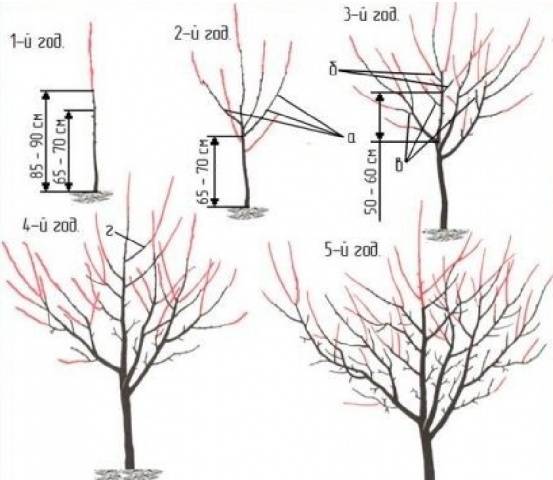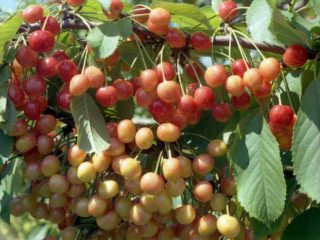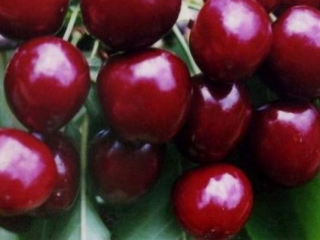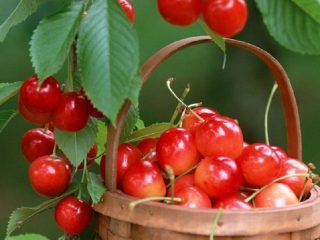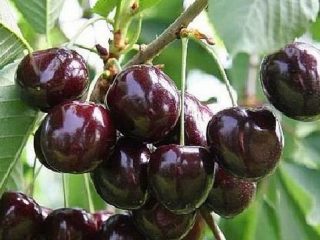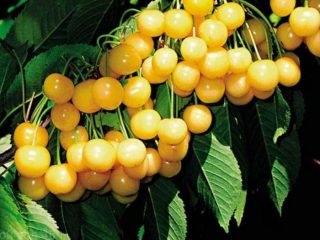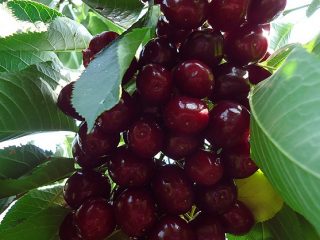Content
Gronkovaya cherry is a very popular variety of Belarusian selection. The characteristics of the tree are so well selected that growing Gronkova is profitable and quite simple.
History of selection
A group of scientists from the Institute of Fruit Growing of the Republic of Belarus worked on the creation of the variety - E. P. Syubarova, V. S. Zhuk, M. I. Vyshinskaya, R. M. Sulimova. To obtain the necessary properties, a mixture of cherry pollen and the Severnaya variety were crossed. The variety was included in the State Register in 1999.
Description of culture
The culture is vigorous, but the Gronkovaya cherry variety has an average height. The tree grows quickly, reaching a size of 4.5-5 m when mature.
Gronkova's crown is medium-dense and wide-pyramidal in shape. The shoots are of medium length and thickness, growing straight. The skin is brown in color.
The leaves are small compared to the normal size of cherry leaf blades.They have the shape of an ellipse with a pointed end, and are painted dark green.
Gronkova’s fruits are heart-shaped and one-dimensional. The skin is dark red. The pulp is the same color and juicy. The small bone comes off easily. The weight of one berry is about 5-6 g.
The description of the Gronkovaya cherry variety should be continued by listing the taste parameters. The fruits are sweet, dessert taste. The tasting score of Gronkovaya cherries is 4.8 points.
The variety is most widespread in the regions of the Republic of Belarus - Mogilev, Gomel, Brest, Vitebsk, Grodno. It is also recommended to grow the variety in a region with similar climatic conditions - the North Caucasus or the Astrakhan region.
An important addition to the description will be a photo of the Gronkovaya cherry.
Characteristics
The main characteristic of the Gronkovaya cherry variety is the ripening period. The species belongs to the early ones, so all other parameters depend on the developmental characteristics of the early cherry.
Drought resistance, winter hardiness
Gronkova's winter hardiness is high. Slightly inferior in parameter to plum, pear and apple tree. The variety is valued for its ability to withstand low temperatures and frosts, but for the winter period the tree requires shelter. If autumn events are carried out correctly, the variety can withstand frosts down to 24 °C. A number of factors influence Gronkova’s winter hardiness:
- fertilization;
- preparatory activities for winter;
- location of the garden plot;
- terrain.
Pollination, flowering period and ripening time
The Cherry variety Gronkovaya is self-sterile.To get a good harvest, you need to plant other species nearby. The following pollinating varieties are best suited for Gronkovaya cherries:
- Rival;
- Sap;
- Folk;
- Zhurba;
- And the way;
- Hotel;
- Syubarovskaya.
Gronkovaya blooms in early spring, and the fruits are ready for picking at the end of June.
Productivity, fruiting
The productivity of the cherry variety is high, fruiting is regular every year, from 65 to 90 centners of ripe berries are collected from 1 hectare. The value depends on compliance with agrotechnical requirements and climatic growing conditions. The first Gronkova harvest is harvested in the 4th year after planting the seedling.
Area of application of berries
The best use of the Gronkovaya variety is to enjoy fresh berries.
When cherries ripen, there is not yet enough vitamins in the garden. Therefore, the optimal type of preparations from early varieties is compotes. It is better to make jam or preserves from later varieties of cherries.
Resistance to diseases and pests
The Gronkovaya variety is highly valued for its resistance to diseases and pest attacks. The plant demonstrates the greatest immunity to coccomycosis.
Advantages and disadvantages
Based on the description of the Gronkovaya cherry, you can make a list of the pros and cons of this type. Among the advantages, gardeners note:
- regular high yields;
- winter hardiness;
- early ripening;
- decent taste and product qualities;
- precociousness;
- disease resistance.
And the disadvantages of the Gronkovaya variety are:
- self-sterility;
- short shelf life;
- average transportation rate.
Landing Features
Planting Gronkova cherries is a responsible undertaking. The correct choice of place and timing will ensure good development of the plant.
Recommended timing
For a heat-loving plant in the southern regions, the best time will be autumn. Here the winters are not harsh, and the seedling will take root well and begin to actively grow in early spring.
In the middle zone, the variety can be planted in spring and autumn. To choose when is the best time, they rely on the weather. Sudden changes in winter - it is better to plant in spring, even, calm winter - then autumn.
Choosing a suitable location
Good lighting is very important for cherries. In this case, it is necessary to plant the seedling so that it is not shaded by neighboring trees. The place should not be blown by strong winds, the occurrence of groundwater should be no closer than 2.5 m to the surface. To avoid stagnation of moisture, gentle slopes or mounds are chosen for planting cherries.
What crops can and cannot be planted next to cherries?
According to the recommendations of farmers, cherries should be combined with other stone fruit crops. For example, Gronkovaya will grow well next to cherries, elderberries, grapes or hawthorns. But it is better to place currants, gooseberries, raspberries or sea buckthorn on the other side of the garden. If there is a shortage of space, it is necessary to maintain a distance of at least 5 m between the Gronkovaya cherry and the apple or pear tree.
Selection and preparation of planting material
It is optimal to purchase seedlings at a time when the choice of planting material is most extensive. It is best to contact a specialized nursery in the fall. Important! Purchased Gronkovaya cherry seedlings must have a well-developed powerful root system and a graft mark.
The optimal height of a one-year-old Gronkova tree is about 80 cm, a two-year-old tree is no more than 1 m. If the seedlings need to be transported to the site, the roots are wrapped in a cloth soaked in water and covered with polyethylene on top.
Landing algorithm
Before planting, prepare the soil. Mix fertile garden soil and humus in a ratio of 1:2. If the site has clay or peat soil, then the planting hole will need to be completely filled with the prepared mixture, having first removed all the soil from there. Then:
- Dig a hole measuring 65 cm x 80 cm.
- Pour a mound from the prepared mixture.
- Install a seedling and a peg for tying.
- Straighten the roots.
- Cover with soil, periodically shaking the tree and watering the ground with water.
- Lightly compact the soil in the circle around the trunk.
- Water the plant.
- Make formative post-planting pruning.
Subsequent care of the crop
Growing Gronkovaya cherries consists of a certain set of agrotechnical measures. The health and productivity of the tree depend on the quality and timeliness of their implementation.
Regular watering is especially necessary for a young seedling in the first year of life. Then, for mature trees, 3 waterings are left in the summer.
Weeding and loosening are also very important in the first 2-3 years. To prevent weeds
killed the young plant and did not become carriers of diseases or pests.
Getting a good harvest of Gronkovaya cherries without pruning is problematic. The tree is pruned annually to prevent thickening of the crown.
The main fertilizers are applied in the fall before digging.
To protect against burns and invasion of parasites, the trunks of the Gronkovaya cherry are whitened. Mature trees in the southern regions can winter without additional shelter. Young ones must be covered with burlap and spruce branches. Artificial materials are not used to prevent the trees from rotting.
Diseases and pests, methods of control and prevention
Initial preventive treatment is carried out in early spring, before sap flow begins, and also in autumn during leaf fall. To do this, use a urea solution (700 g per 10 liters of water).
Name of the disease | Control and prevention measures |
Clusterosporiasis | Treatment with copper sulfate, Nitrafen, Bordeaux mixture. Cutting out affected parts of the tree |
Gray rot (moniliosis) | Spraying with Bordeaux mixture after flowering and 14 days after harvesting. Removing diseased shoots and affected fruits, burning leaves |
Migratory pests (cherry aphid, cherry fly, leaf roller) | Treatment with Fitoverm, Akarin, Iskra-bio |
Conclusion
Gronkovaya cherry is a worthy early variety. High yields allow you to get useful fruits at a time when other crops are just beginning to bloom.
Reviews
Reviews of the Gronkovaya cherry are very positive and enthusiastic.
